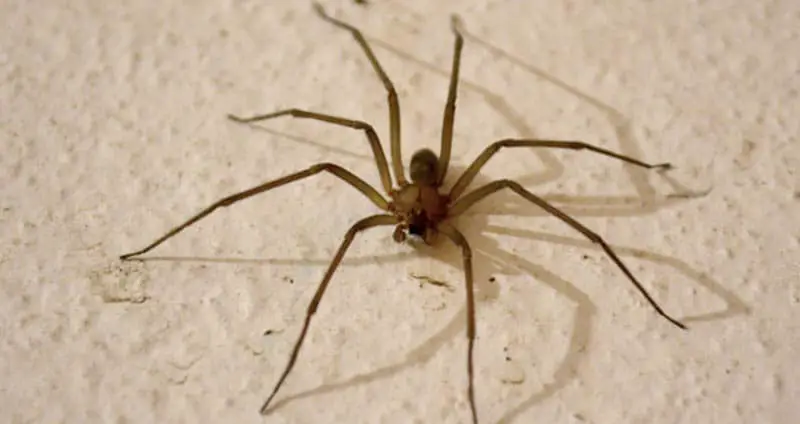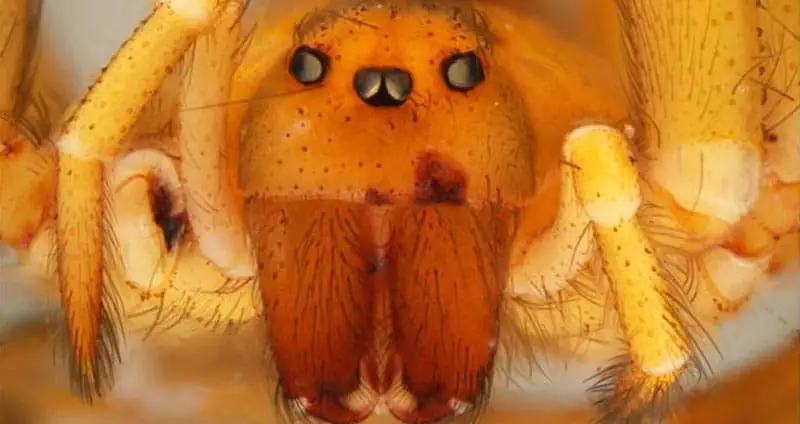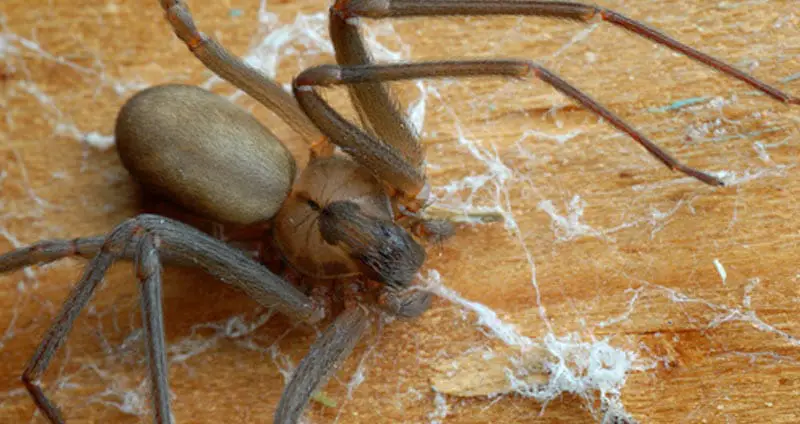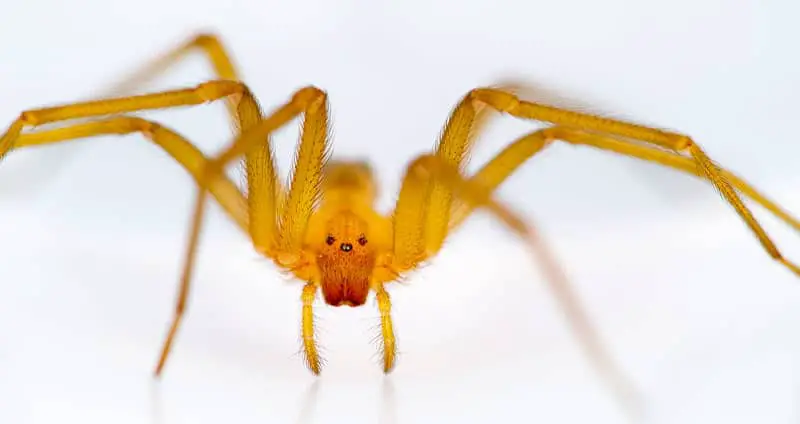The Chilean Recluse Spider, also known by its scientific name Loxosceles laeta is an extremely dangerous and somewhat common spider.
While the entire recluse family of spiders is known to be dangerous, this particular species is among the most venomous. Not a spider to be messed with!
Fortunately, the Chilean Recluse Spider has a few distinctive physical characteristics that make it easy to identify, and its personality may keep it out of the way of humans.
Table of Contents
At A Glance
| Scientific Name | Loxosceles laeta |
| Distribution | Chile, Peru, Ecuador, Brazil, Argentina, Uruguay, and North America |
| Habitat | Around debris and rocks in forests, and dark, dry areas of homes |
| Size | 1/2″ to 1″ |
| Bite | Life-threatening |
| Lifespan | 2-3 years |
Chilean Recluse Spider Appearance
Recluse spiders are larger spiders, and this particular species in no exception. The body length of a Chilean Recluse Spider is typically around 1/2″, while its total legspan can reach about 1.5″.
In terms of coloration, this species doesn’t differ greatly from other recluse spiders. Its body is a fairly uniform brown color with markings on both its thorax and dorsal side. Down the back of the spider, a curled black line stretches from the neck down the abdomen that resembles a violin.
Hence one of the common names: “fiddleback spider”.
While that is a common physical appearance, it isn’t certain. These spiders vary in coloration from light tan to dark brown, and some specimen don’t have a visible violin pattern.
Fortunately, an easy way to identify this spider is by observing its eyes. While most spiders have eight, recluse spiders have six eyes with two in the middle and two on each side of those.

Chilean Recluse Spider Habitat
Like many recluse spiders, the Chilean Recluse Spider is native to various South American countries. It’s most common in Chile, but it’s also found in Argentina, Brazil, Ecuador, Peru, and Uruguay.
This species has spread from those areas over time, although it doesn’t thrive or heavily reproduce in most of these newer areas.
In the United States, the Chilean Recluse is commonly found in and around Los Angeles, in addition to Florida, Kansas, and Massachusetts. Canada and Australia also have notable populations.
Finland has a confined infestation in their Natural History Museum of Helsinki where the spider was likely introduced through a fruit shipment in the 1960s or 1970s.
No matter where this spider lives, they prefer warm and dry environments. This means that their webs are frequently built in sheds, garages, piles of firewood, and closets. Essentially any place that is disturbed infrequently.
Chilean Recluse Spider Behavior
First and foremost, like the other recluse spiders, the Chilean Recluse is a hunter species. They construct irregular webs that they take shelter in during the day, then they leave these webs at night to hunt.
Because of this behavior, humans and Chilean Recluses don’t frequently cross paths when the spider is out and about. They’re often only encountered when a human accidentally stumbles upon one of these irregular webs.
This spider does possess the ability to move very quickly due to the fact that it hunts down its prey, but that trait doesn’t make this a threatening species.
It tends to stay true to its name and act reclusive, keeping itself out of any potential danger.

Chilean Recluse Spider Bite & Venom
While this spider is reclusive, it certainly isn’t harmless. In fact, the Chilean Recluse Spider has one of the most potent and medically-significant venoms of the spider world.
This species’ venom contains Sphingomyelinase D, a dermonecrotic agent that is only found in a few bacteria. While all sicariid spiders have this agent, Chilean Recluses posses significantly higher concentrations.
Therefore, there are several side-effects of a bite. These effects range from mild irritation to skin necrosis to an illness called viscerocutaneous loxoscelism that occurs in 10-15% of all cases.
Cutaneous loxoscelism results from deep, prolonged bites and destroys soft tissue which then takes months, maybe years to fully heal. This damaged tissue becomes gangrenous and falls away.
This illness results in death in 3-4% of cases (in Chile) due to hemoglobinuria and kidney failure.
A bite from this spider is extremely painful but sometimes takes several hours to start displaying any symptoms. At this point, the venom is often widespread throughout the body.
Fortunately, these spiders aren’t looking to bite. They mostly only bite when they’re directly threatened or, commonly, if they’re inside clothing when it’s put on, pressing the spider against skin.

Chilean Recluse Spider Eggs & Spiderlings
Warmer months are typically prime months for Chilean Recluse mating. May, June, and July are common months for egg sacs to be lain by females.
Females typically create their egg sacs on or near their webs, where they take about a month to hatch into spiderlings.
Each egg sac contains around 50 spiderlings, and they tend to hang around the web for a short while before going off on their own.
Random Chilean Recluse Spider Facts
- The venom of this spider is so potent that prey are almost immediately paralyzed.
- It also has the name “araña de rincón“, or “corner spider”, as it’s often found in secluded corners.
- It’s recommended that a bite from one of these spiders is placed under ice, as venom thrives in warm conditions.
- While many spiders are known to survive long periods of time without food and water, the Chilean Recluse Spider survives significantly longer than average, helping its spread.

